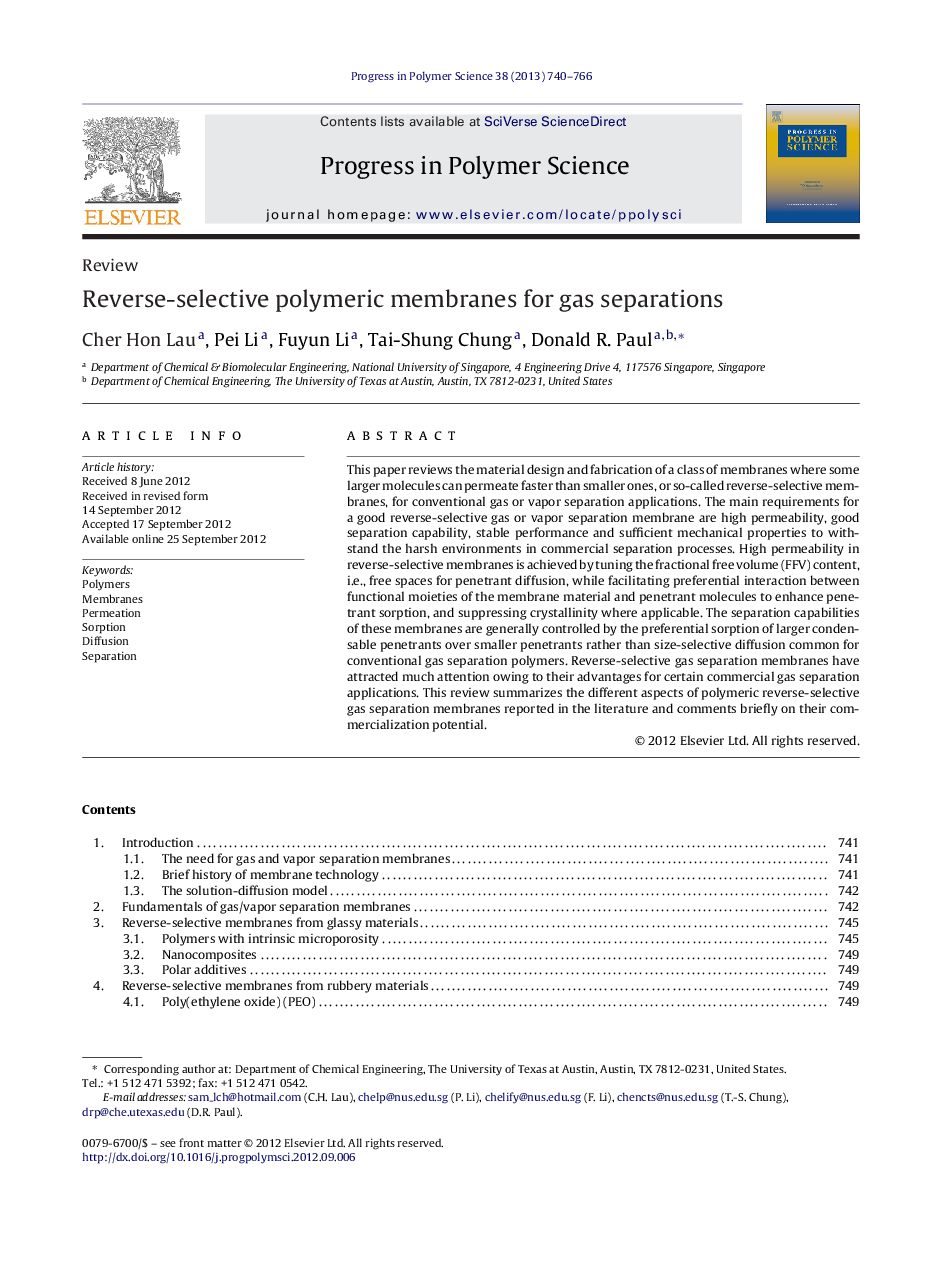| Article ID | Journal | Published Year | Pages | File Type |
|---|---|---|---|---|
| 5208327 | Progress in Polymer Science | 2013 | 27 Pages |
This paper reviews the material design and fabrication of a class of membranes where some larger molecules can permeate faster than smaller ones, or so-called reverse-selective membranes, for conventional gas or vapor separation applications. The main requirements for a good reverse-selective gas or vapor separation membrane are high permeability, good separation capability, stable performance and sufficient mechanical properties to withstand the harsh environments in commercial separation processes. High permeability in reverse-selective membranes is achieved by tuning the fractional free volume (FFV) content, i.e., free spaces for penetrant diffusion, while facilitating preferential interaction between functional moieties of the membrane material and penetrant molecules to enhance penetrant sorption, and suppressing crystallinity where applicable. The separation capabilities of these membranes are generally controlled by the preferential sorption of larger condensable penetrants over smaller penetrants rather than size-selective diffusion common for conventional gas separation polymers. Reverse-selective gas separation membranes have attracted much attention owing to their advantages for certain commercial gas separation applications. This review summarizes the different aspects of polymeric reverse-selective gas separation membranes reported in the literature and comments briefly on their commercialization potential.
